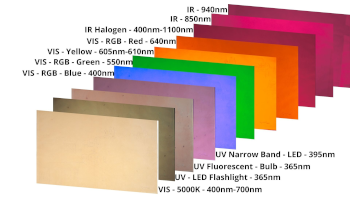
Non-invasive scientific imaging is increasingly becoming an important research tool in the study of cultural heritage objects, combining sustainability and preservation in a responsible and conscious manner. The purpose of this study is to make a legibility by digital restoration of two drawings by Brazilian modernist artist Guignard, dated 1956 and 1958, respectively, one created with ink and pen nib, and the other presumably with graphite. Both drawings have likely suff ered from photodegradation, with almost total loss of visibility due to fading and erasure of the drawn lines. Scientific photography techniques were employed, including infrared refl ectance photography, visible light photography, ultraviolet fl uorescence, Multispectral Imaging, transmitted light photography, raking light photography, and Refl ectance Transformation Imaging (RTI). These techniques, used in combination, returned positive results, enhancing legibility and revealing traces and details that were no longer visible to the naked eye.
Larissa Lorrane Silva Oliveira, Alexandre Cruz Leão, Alexandre Oliveira Costa, "From Invisible to Visible: Scientific Imaging Applied in Drawings by Alberto da Veiga Guignard" in Archiving Conference, 2025, pp 68 - 72, https://doi.org/10.2352/issn.2168-3204.2025.22.1.12
 Find this author on Google Scholar
Find this author on Google Scholar Find this author on PubMed
Find this author on PubMed